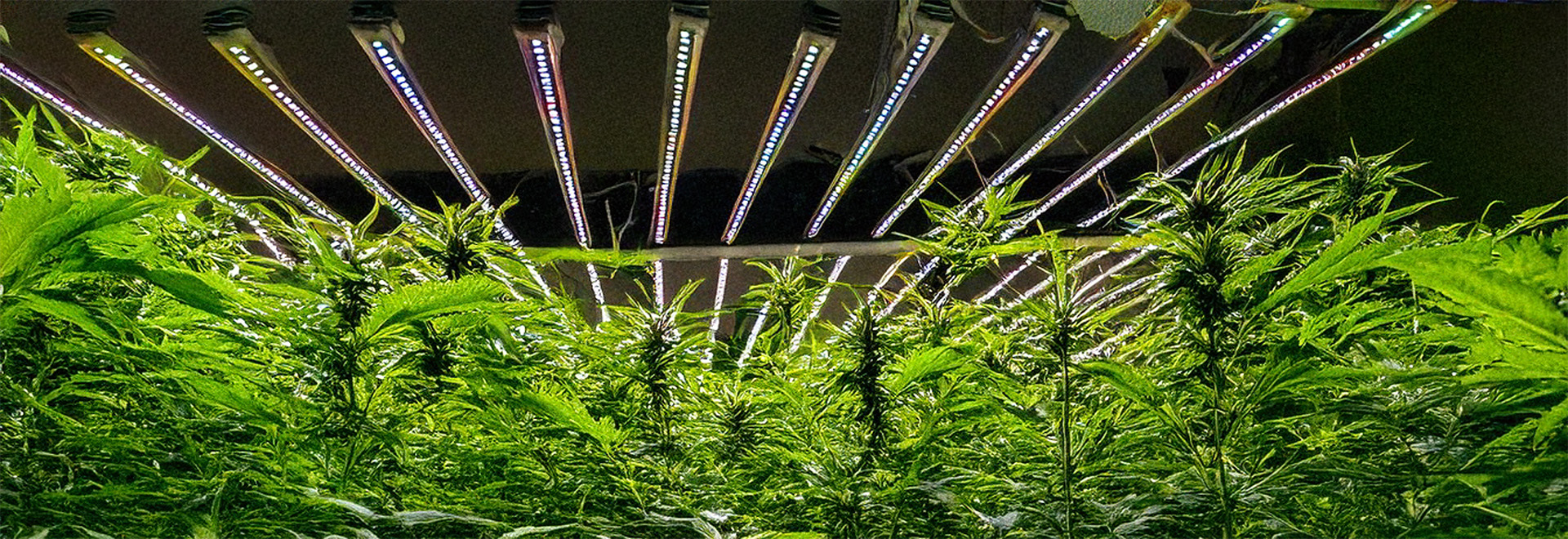Scrogging: The Smart Technique for Higher Yield and Uniform Buds
Do you want to achieve maximum yield from your grow space and cultivate beautiful, uniform buds?
Then Scrogging (Screen of Green) is the technique for you.
In this blog, you’ll learn everything about scrogging: the advantages, disadvantages, the best materials, and a step-by-step plan to successfully scrog.
What is Scrogging?
Scrogging is a training technique where you guide plants through a horizontal net or grid.
This distributes growth horizontally and creates an even canopy where all buds receive equal light.
Result?
A sea of thick, uniform buds and a higher yield per square meter.
Advantages of Scrogging
✅ Optimal light distribution:
All buds are at the same height for maximum light exposure.
✅ Higher yield:
More buds per plant as energy is evenly distributed.
✅ Better air circulation:
Reduced risk of mold and heat stress.
✅ Suitable for small spaces:
Ideal for limited height.
✅ Easier maintenance:
Watering, pruning, and inspecting become simpler.
Disadvantages of Scrogging
❌ Longer preparation time:
You need to train plants before switching to flowering.
❌ Plants cannot be moved:
Once grown into the net, relocation is difficult.
❌ Daily attention required:
Shoots need to be regularly guided and bent.
Fixed Net vs. Flexible Net: What Works Better?
There are two main options for a scrog net: a fixed net or a flexible elastic net.
| Type of Net | Characteristics |
|---|---|
| Fixed Net (e.g., PVC or steel wire) | Remains firm; effectively fixes branches; better control. |
| Flexible Net (elastic) | Stretches with plants; less control; uneven buds. |
Advice:
Always choose a fixed net. Flexible nets stretch, causing your canopy to lose its flat shape.
Tip: Make your own sturdy frame from PVC pipes and tension wires for a professional result!
Plan of Action: Scrogging Step-by-Step
Step 1: Prepare Setup
-
Space: for example, 120×120 cm for 2–4 plants.
-
Mount fixed net 30–40 cm above your pots.
-
Use a powerful LED lamp (~600–700 watts).
Step 2: Training During Growth Phase (18/6)
-
Start once plants have developed 4–5 nodes.
-
Guide each new shoot horizontally under the net.
-
Slowly fill the net by spreading tops to empty squares.
Step 3: When to Switch to 12/12?
-
Switch to 12/12 once the net is about 2/3 filled.
-
Plants will completely fill the net during the first weeks of flowering (“stretch phase”).
Why 2/3?
During the stretch, a plant can double its height up to 2x, ideal for letting the net grow nicely full without becoming overcrowded.
Step 4: Maintenance in Flowering
-
Continue guiding shoots horizontally in the first two weeks of flowering.
-
Stop training once the first flowering signs (white hairs) are visible.
-
Then start lollipopping: remove leaves and branches under the net to direct all energy to the buds.
Alternative: Scrogging Directly at 12/12
Some growers start their scrog directly with a 12/12 light schedule.
Benefits:
-
Faster turnaround time.
-
More efficient with fast-growing strains.
Disadvantages:
-
Less time to fill the net.
-
Smaller plants, smaller yield per plant.
-
More attention required during stretch.
Practical advice:
-
Suitable for strains with strong stretch (for example Haze, Amnesia).
-
Less effective with compact indicas.
Important Tips for Successful Scrogging
🌿 Start early: Begin as soon as the plants are healthy and strong.
🌿 Work horizontally: Guide all shoots neatly under the net.
🌿 Use a sturdy net: Flexible nets stretch along and are less effective.
🌿 Timing is everything: Switch to 12/12 at about 2/3 net fill for perfect canopy formation.
🌿 Keep monitoring: Check new shoots daily during the stretch phase.
Conclusion
Scrogging is a powerful technique for anyone who wants to achieve maximum yield and perfect buds.
With a bit of planning, the right net, and good timing, you create a perfect even grow that guarantees thick, heavy colas.
By switching timely at 2/3 filled net and training accurately, you can achieve fantastic results — harvests to be proud of!
📋 Summary Checklist
✅ Fixed, sturdy net at 30–40 cm height
✅ Start training at 4–5 nodes
✅ Fill net to about 2/3 before switching
✅ Switch to 12/12 at 2/3 net fill
✅ Utilize stretch phase to let net grow full
✅ Lollipop after start of flowering

